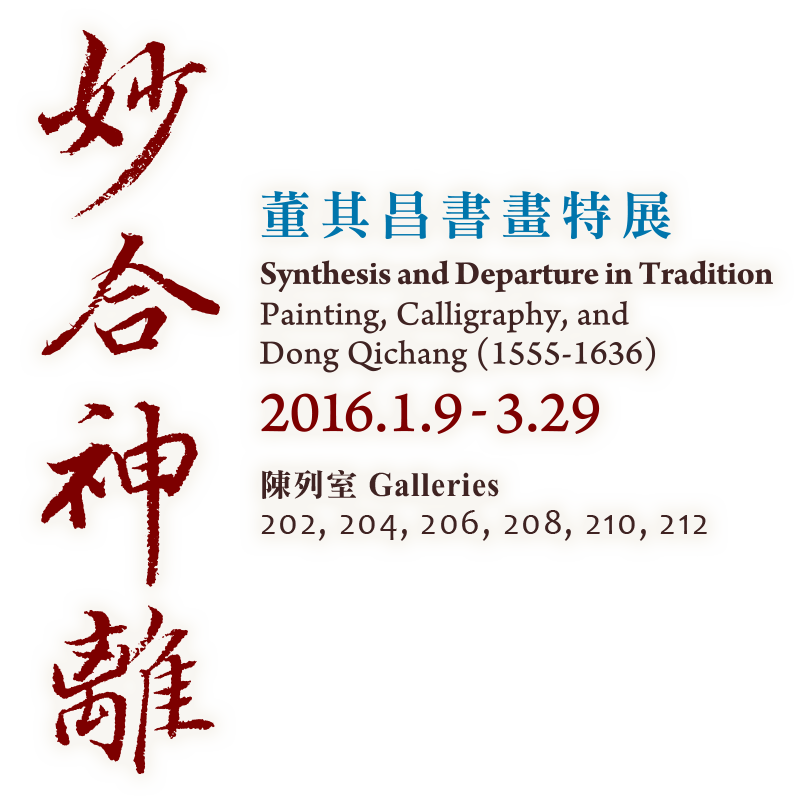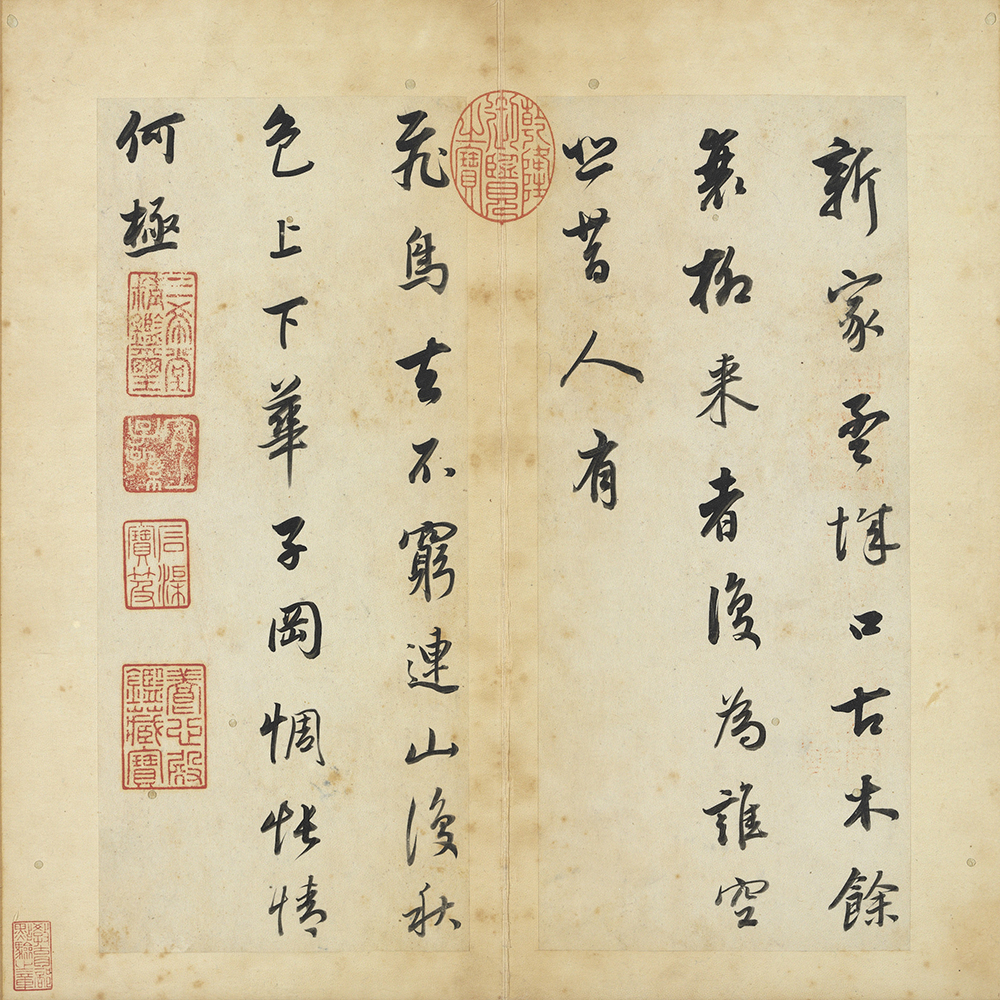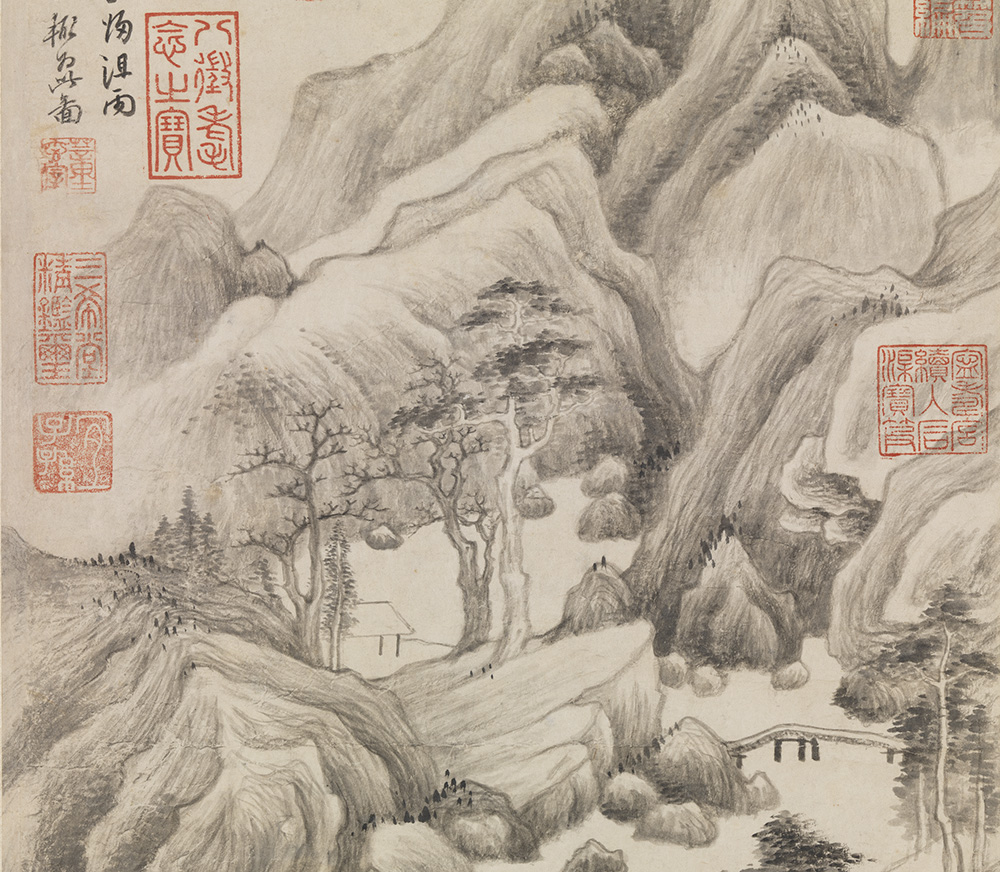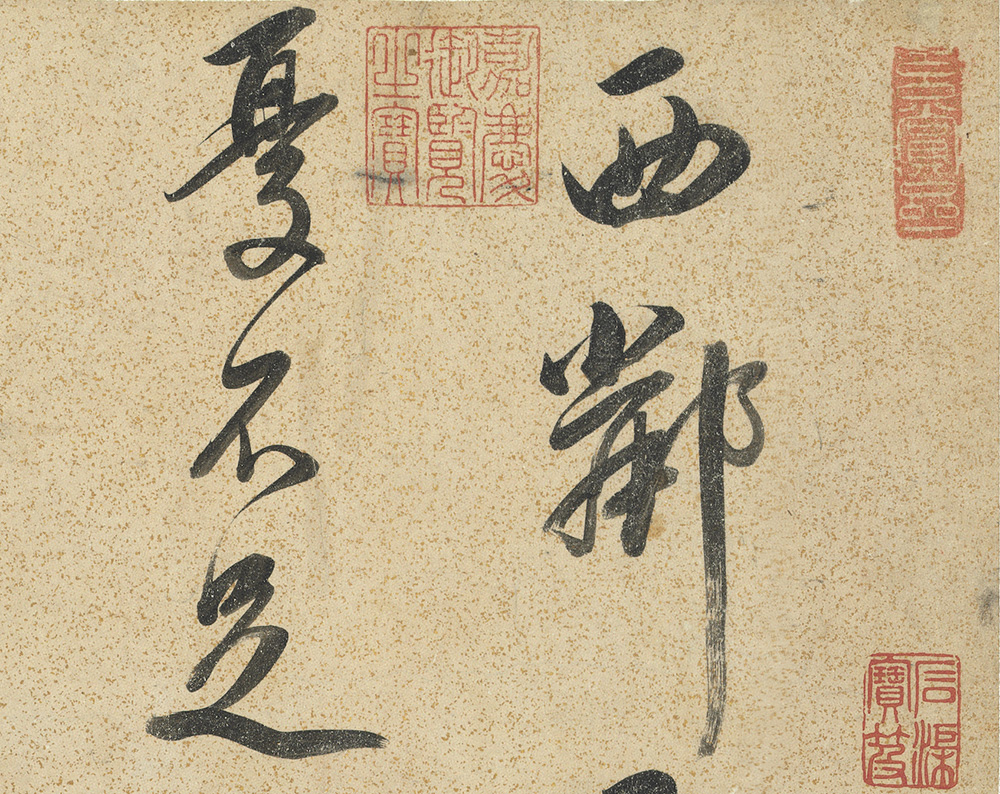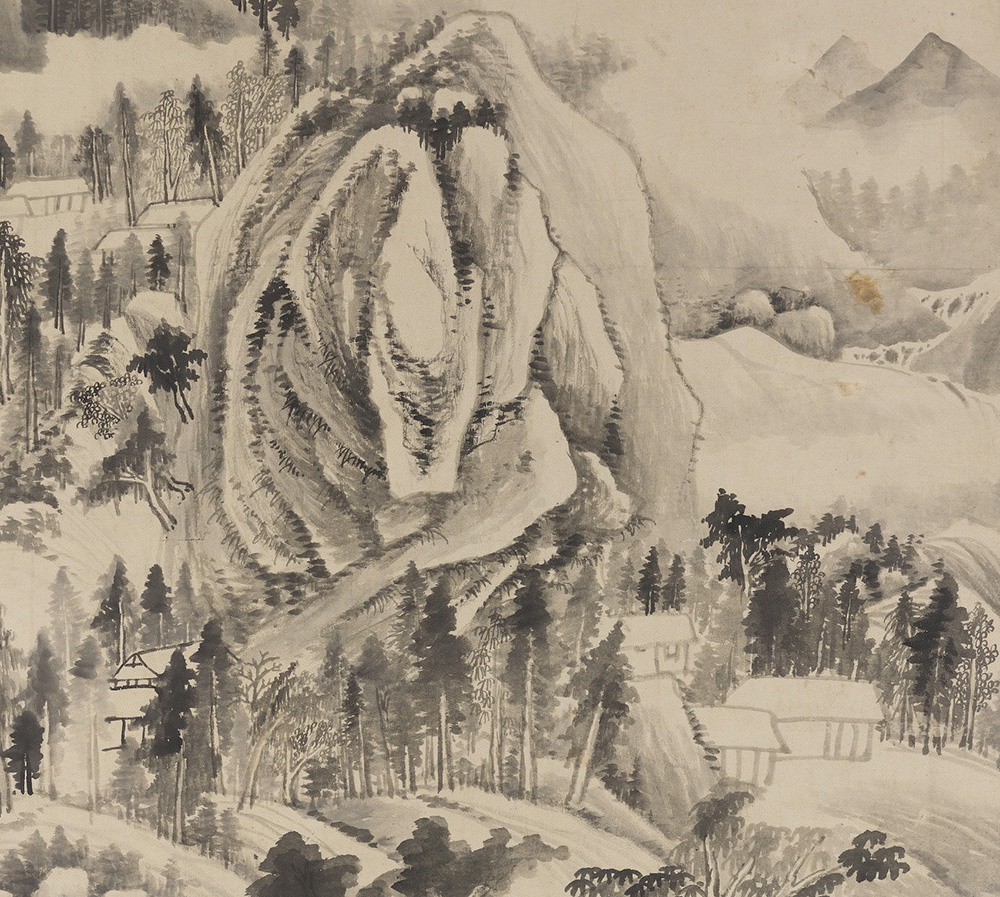Dong Qichang claimed to have started learning calligraphy at the Chinese age of 17 and painting when he was 22. In calligraphy, he began by studying Yan Zhenqing's (709-785) "Duobao Pagoda Stele" and then went on to imitate works by masters from the Wei, Jin, Tang, and Song dynasties, synthesizing them into a pure yet powerfully refined style of elegance and classicism. He excelled at running, cursive, and regular scripts, becoming founder of the late Ming school of calligraphy dedicated to traditional modelbook styles. In painting, Dong Qichang focused on taking naturalness as his teacher in the hope of injecting his landscape constructs of brush and ink with a sense of life. He also took as his goal to pursue the fountainhead of literati painting, trying his hand at the stylistic manners of various masters from the Tang, Five Dynasties, Song, and Yuan periods. Ultimately, Dong Qichang came up with an innovative approach to copying as a way to pay tribute to tradition while also engaging in a dialogue with it.
Wangchuan Poetry
- Dong Qichang (1555-1636), Ming dynasty
- Album leaf, ink on paper, 27 x 11.7 cm
Late in the spring of 1600, Dong Qichang took a trip to Yixing (Jingxi) to visit Wu Zhengzhi (1562-?), who had been awarded the Presented Scholar degree in the same year (1589) as himself, and transcribed "Wangchuan Poetry" by Wang Wei (701-761). Wu, a collector in Yixing, maintained a close relationship with Dong, whose "White Clouds and Strange Peaks" was also done for him. Dong also once owned Huang Gongwang's famous "Dwelling in the Fuchun Mountains," which later came into the possession of Wu, whose son (Wu Hongyu) on his deathbed famously tried to burn it to accompany him in the afterlife. Fortunately, the painting was saved before the flames consumed it.
In this album, the brushwork is reserved and consolidated, the lines rounded and smooth but not lacking in pure strength or vigor as well. Rich variations of ink tones also appear, reflecting the rhythm and action of the brush movement. A slight slant is evident in the characters, giving the work a further touch of animation and energy.
Seeking Antiquity at Fengjing
- Dong Qichang (1555-1636), Ming dynasty
- Hanging scroll, ink on paper, 80.2 x 30 cm
In the first lunar month of 1602, Dong Qichang was traveling with Gu Jiming from Zuili (Jiaxing) when they encountered a rainstorm and found a place to stay in Fengjing. After appreciating works by famous artists of the past there, Dong Qichang did this painting. From the inscription by Dong's close friend, Chen Jiru (1558-1639), we learn that Dong combined his understanding of the venerated styles of Wang Wei and Dong Yuan.
Here, Dong Qichang took the "hemp fiber" texture strokes of Dong Yuan and arranged their density and thickness to the strokes to create layer upon layer of forms, giving the landscape a moist and glistening effect. Tucked among the rocks, waters, and trees are a desolate thatched cottage and small kiosk, which indeed give the scroll a feeling associated with Wang Wei's "Wangchuan Villa" painting tradition.
Poetry by Immortal Lü
- Dong Qichang (1555-1636), Ming dynasty
- Handscroll, ink on paper, 24.7 x 293.1 cm
In the Xining reign (1068-1077) of the Northern Song, Lü Dongbin reportedly paid a visit to Shen Donglao at Mt. Donglin in Huzhou. After getting drunk there, he used the peel of a pomegranate to write poetry on a wall. Seven years later, when Su Shi paid a visit, Shen had already passed away for three years but Su composed three poems to record this event nonetheless. In the late Ming dynasty, the poetry by Lü Dongbin, who had become regarded as an immortal, circulated in the form of an engraved stone rubbing. Dong Qichang considered the style to be quite close to that of Huaisu and so decided to use Huaisu's style of large cursive script to transcribe it.
This handscroll is undated, but the brush movement differs from the light spiritedness of Dong's early years, being richer and rounder than "Regulated Verse by Du Fu" from his middle years while also featuring more variations in terms of angles and turns. It shows that Dong had already naturally incorporated the features of Huaisu's manner into his own, making this a work of his later years.
Shady Trees in a Summer Landscape
- Dong Qichang (1555-1636), Ming dynasty
- Hanging scroll, ink on paper, 321.4 x 102.4 cm
This is a rare monumental painting by Dong Qichang. The lower half of the scroll consists mainly of two trees rising majestically upwards with their branches splaying forth and meeting with the monumental massif that rises suddenly and writhes outwards in the middleground followed by layers of mountaintops in the distance. The way that these parts relate to each other creates a force that seems to pierce the heavens. Furthermore, the representation of the boundaries to the ridges and the arrangement of trees, cloud bands, and tree branches forms a combination of diagonal facets inlaid into and intersecting throughout the surface of the painting, forming a visually rich and rhythmically dynamic effect.
According to Dong Qichang's inscription, he had an opportunity to view Dong Yuan's "Shady Trees in a Summer Landscape" in the collection of Wu Ting in Beijing. He then came to understand the origins of Huang Gongwang's style, this work in the pursuit of Dong Yuan and Huang Gongwang clearly showing how Dong departed from them as well.
